-
Just for Fun: Eye Tests
Just for Fun: Eye Tests
Have you ever wondered if you have better vision than most people? Do you think we all see colors the same way? Can you pass an eye chart exam with no problem?
Here, we at Gerstein Eye Institute have gathered some fun resources here for you to try out and see where you stack up. Have fun!
Color vision test
First up is a test from BuzzFeed to evaluate how well you see various colors. Give it a shot!
Only People with Perfect Color Vision Can Pass This Light and Dark Test
How did you do? Is your color vision what you expected? Although true color blindness is fairly uncommon, many people aren’t aware that the ability to see colors varies a bit from one person to another. We’d be happy to tell you more if you’re interested!
Vision test
Next is BuzzFeed’s quick vision test, which they refer to as:
While we’re pretty sure you know this isn’t a true vision exam, it does give you a quick look at how well you see tiny print, and how well you can color match. For a more accurate look at your eyesight and a true measurement of your abilities, visit us for a complete examination.
20/20 vision
Do you think you have 20/20 vision? BuzzFeed is challenging you with this chart test –see how you hold up:
Only People with 20/20 Vision Can Pass This Eye Chart Test
Yeah, we know. It’s not a real chart in a real office. And computer screens just might complicate things a bit. Still, if you haven’t been in for a real eye chart exam in a long time, it might be a good thing to consider. We’re here for you if you’d like to give our test a try.
Optical illusions
One more link — just for kicks, and this isn’t really even about vision, per se. Check out the following illusions and see how your eyes and brain can sometimes be a little bit tricky when they work together on certain images, courtesy of BrainDen.com:
Pretty amazing, right?
Feel free to share this post with friends and family and let them get in on the fun, and be sure to check back for additional information, resources, and interesting links. We love to find great stuff and pass it along!
Visit Gerstein Eye Institute in Chicago today for an in-office eye test!
-
Protecting Your Vision from Glaucoma
Protecting Your Vision from Glaucoma
Glaucoma refers to conditions that damage the optic nerve, and this problem can develop gradually and lead to blindness if not addressed. Also, because vision loss caused by glaucoma cannot be recovered, it is important to be proactive when it comes to protecting your vision from this eye disease. To help avoid the dangers of glaucoma, there are a few things that your ophthalmologist near Chicago would want you to know about eye care.
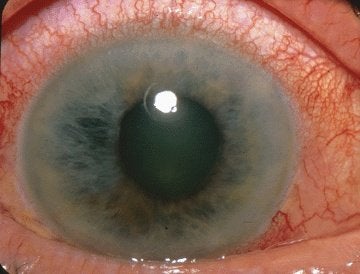
One of the best things that you can do to protect your vision from glaucoma is not to wait for symptoms to develop and to schedule comprehensive dilated eye exams with an eye doctor. Although this condition can’t be reversed, catching glaucoma early can allow your eye doctor to slow or stop the disease’s progression. Some of the risk factors for glaucoma include being over age 60, being black or Hispanic, having high eye pressure, and taking corticosteroids long-term. Also, having some eye conditions, certain medical conditions, estrogen deficiency, or a family history of glaucoma also increases your risk for this disease. If you’re at a high risk for glaucoma, then you should see your eye doctor for exams every 1 to 2 years.
-
What Diabetic Patients Need to Know About Eye Care
What Diabetic Patients Need to Know About Eye Care
To understand the importance of practicing good eye care in Chicago , diabetic patients can benefit from knowing how diabetes can increase their risk for some eye problems. In honor of Diabetic Eye Disease Awareness Month, please watch this video to learn a few important things that diabetes patients should know about eye care.
-
Why Choose Visian ICL Intraocular Lenses?
Why Choose Visian ICL Intraocular Lenses?
If you’re tired of wearing contact lenses and eyeglasses, then your ophthalmologist in Chicago may recommend treatment with intraocular lenses. Keep reading to learn why you should consider Visian ICL for your intraocular implants .
Simple Procedure
Visian ICL is a quick and painless vision correction procedure. Also, it is minimally invasive, in part because the Visian ICL Collamer material allows for easy insertion of the intraocular lens. After numbing your eyes, your ophthalmologist can perform the procedure quickly, and you can expect the appointment to last for just half an hour or less. Also, the fact that Visian ICL is minimally invasive allows for patients to enjoy a quick recovery time. This means that if you choose Visian ICL, then you can look forward to resuming your normal activities, but with clearer vision, after only a few days.
UV Protection
Did you know that it’s important to protect your eyes from UV rays? UV radiation can harm your eyes and is associated with eye problems like photokeratitis, cataracts, and macular degeneration. Happily, patients who chooseVisian ICL for their intraocular implants can benefit from better UV protection for their eyes. The implant’s Collamer material gives Visian ICLs unique, UV protection qualities. After being gently inserted into the eye, a Visian ICL allows natural visible light to pass through, but at the same time creates a barrier of UV protection.
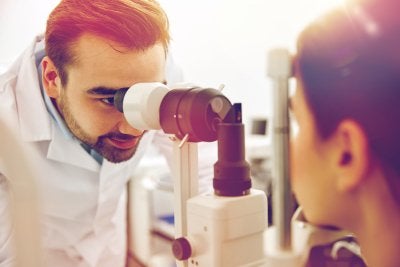
Great Results
Patients who choose Visian ICL for their intraocular implants can rest easy knowing that, should they have a significant change in prescription, their Visian ICL implants are completely removable. This feature also allows you to change your prescription as needed and take advantage of future advances in vision correction technology. Additionally, Visian ICL can correct and reduce high nearsightedness and is an option for many patients with thin corneas, meaning that this procedure can be suitable for many patients who aren’t candidates for other corrective options. Finally, many patients experience fast results and enjoy improved vision immediately after their procedure.
-
A Quick Guide to Diabetic Eye Disease
A Quick Guide to Diabetic Eye Disease
November is Diabetic Eye Disease Awareness Month, and if you have diabetes, then there are several things that your ophthalmologist near Chicago would want you to know about diabetic eye disease, which refers to a group of eye conditions that can affect individuals who have diabetes. Keep reading for a quick guide to these diseases.
Diabetic Retinopathy
Diabetic retinopathy is a complication of diabetes. This condition develops when blood vessels in the retina are damaged, and it is more likely to develop in diabetics with poorly controlled blood sugar. Early stages of this eye problem may not produce symptoms. As the disease progresses, you may experience symptoms such as floaters or dark spots, poor color vision, blurry vision, and vision loss.
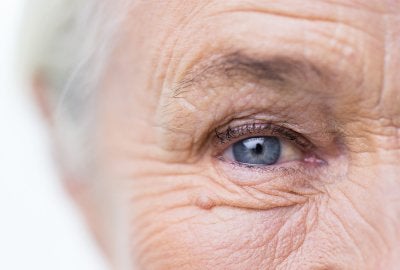
Diabetic Macular Edema
Some diabetic patients who develop diabetic retinopathy may also experience a complication of this condition called diabetic macular edema. In diabetic retinopathy, high blood sugar damages blood vessels in the retina. Sometimes, this process can result in microaneurysms that leak fluid into the retina. The excess fluid results in swelling in the retina, can affect the person’s vision, and may even result in blindness.
Cataracts
Your eye’s lens, which is located behind the iris, is supposed to be clear and is designed to focus light that passes through the eye. When the lens forms a clouded spot, the area is referred to as a cataract. A cataract develops when proteins in the lens clump together, and this problem can impair your vision and make everyday tasks a challenge. There are many risk factors for cataracts, but adults who have diabetes are much more likely to develop this problem than those who do not have diabetes. Your ophthalmologist can diagnose this condition and discuss whether you should undergo cataract surgery.
Glaucoma
Glaucoma refers to conditions that damage the eye’s optic nerve, and it is a leading cause of blindness. Early stages of this disease typically do not produce symptoms, and diabetes greatly increases the risk of glaucoma in adults. For these reasons, it’s vital to schedule regular eye care appointments with your ophthalmologist.
-
What Are the Symptoms of Angle-Closure Glaucoma?
Has your ophthalmologist in Chicago informed you that you have a higher than normal risk for glaucoma? If so, then you may benefit from understanding the symptoms of one form of this condition, called angle-closure glaucoma. Someone who has angle-closure glaucoma typically will not notice any symptoms before an attack. Symptoms that you may experience in the early stages of an attack include eye pain, mild headaches, blurred vision, and halos. If you notice any of these symptoms, then see your eye doctor as soon as possible. Other symptoms that are associated with an angle-closure glaucoma attack include eye redness, severe pain in the eye or forehead, blurred or decreased vision, nausea, vomiting, and headache.
Individuals who are over age 40, have high eye pressure, require vision correction, have suffered an eye injury, or have family members with glaucoma have a higher than normal risk of developing this eye disease. Speak with your ophthalmologist to learn about additional risk factors and whether you may be at risk for glaucoma.
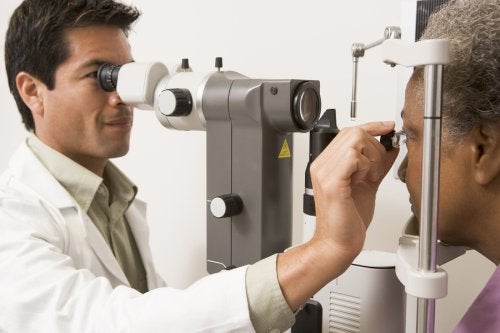
-
Tips for Preventing Eye Injuries
As your ophthalmologist in Chicago will tell you, eye care comes down to more than just regular vision check-ups. October is Eye Injury Prevention Month, and there are plenty of steps you can take to help protect your eyes from harm. Read on for some tips on preventing eye injuries.

Gear Up for Sports
Whether you’re a member of an active sports league, or you only play the occasional game of baseball with friends or colleagues, protecting your eyes while participating in athletic activities can be essential for protecting your eye health. While there are many sports that can pose a threat to your eyes, some of the ones that are commonly associated with eye injuries include baseball, hockey, paintball, racquetball, and fishing.
Wear Shades During the Day
With the arrival of fall, you may be less concerned with protecting your body from the sun’s ultraviolet (UV) rays. However, it’s important to realize that UV rays reach the earth’s surface year-round, even on cloudy days. For this reason, you should continue wearing sunglasses that block 100% of UV rays throughout the fall and winter. This eye safety step is particularly important if you plan to spend time skiing or on the water, as sunlight can reflect off of snow and water and potentially harm your eyes. According to ophthalmologists, eyes can suffer something similar to a sunburn, called photokeratitis, when damaged by UV rays.
Practice Safety Throughout Projects
If you have a home improvement to-do list that you’re hoping to get through this season, then your eye doctor would want you to remember to practice good eye safety as you take on each of these tasks. Even small projects, such as installing shelving or trimming shrubs, can lead to eye injuries if you’re not careful. To protect your eyes from the dangers of flying objects like nails, wood splinters, and branches, remember to wear safety glasses or another form of protective eye wear while working on your DIY projects.
-
Finding the Best IOL for You
Intraocular lenses (IOLs) allow many people with cataracts to see clearly again. If you’re considering speaking with your ophthalmologist in Chicago about the benefits of cataract surgery with intraocular implants , then watch this video to learn about finding the best IOL for you.
Before your surgery, your ophthalmologist will measure your eye to determine what strength IOL is right for you. The different types of IOL designs will affect how well you will see without corrective eyewear. To determine the best choice of IOL for you, you will work together with your ophthalmologist and consider factors such as the health of your eyes, your vision needs, and your treatment goals.
-
Recognizing Household Eye Hazards
Good eye care and visits to your eye doctor in Chicago are important year-round. However, October is eye safety month, so now is a great time to learn what objects around your house may pose a threat to your vision. Continue reading to discover some common household eye hazards.

Lawn and Garden Work
If you’re planning to spend time in your yard this season to get your lawn and garden ready for cold weather, then be sure to wear protective eye gear when you do. Tasks that you may have done countless times, such as mowing the lawn or using an electric trencher, can pose a danger to your eyes, as grass, pebbles, twigs, and similar objects may fly out from under the equipment toward your face. For this reason, whether you’re trimming the hedges or the lawn, you can help avoid a trip to the eye doctor by remembering to protect your eyes.
Home Improvement Tasks
If you’re like many homeowners, then you do what you can to take care of basic repairs around the home. While this can be practical and economical, it’s critical to think of your safety when taking on DIY home improvement tasks. Remember to wear safety goggles when you use a drill or hammer nails, work with solvents or hazardous chemicals, or secure objects with bungee cords. Whenever you use tools of any kind or perform tasks that may produce eye irritants or airborne fragments, remember to shield your eyes with the right protective gear.
Day-to-Day Tasks
There are also many everyday activities that can be potentially harmful to your eyes. For example, hot liquid or oil that splatters while you’re cooking can lead to burns, and allowing the cork to fly when opening a bottle of champagne can also cause an eye injury. Taking care to recognize potential hazards for your eyes, no matter what the activity, can help protect your vision. Speak with your eye doctor to learn what else you can do to protect your eyes from household hazards.
-
Preserving Your Eyesight as You Age
September is Healthy Aging Month, and people of all ages and walks of life are invited to participate. After all, good health in your golden years starts with a commitment to preventive wellness earlier in life. And if you’re already eligible for an AARP card, it’s never too late to get serious about your wellness. As you celebrate each passing year, you should pay attention to the changing needs of your eye health. In Chicago, eye doctors encourage patients to schedule regular exams, even if they don’t wear eyeglasses or contact lenses.
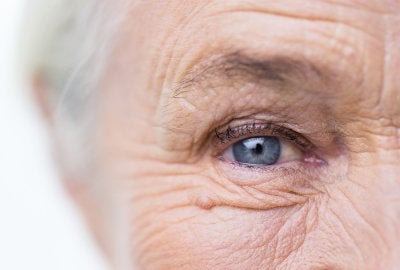
Schedule an eye exam.
Your ophthalmologist will let you know how often you should schedule an eye exam. If you’re 65 or older, you’ll probably need one every year or two. A comprehensive eye exam is an opportunity for the doctor to check for potential red flags of eye disease. With early treatment, it’s possible to delay the progression of eye diseases. It isn’t always easy to remember to schedule an appointment that only happens every year or two. Solve this problem by making your next appointment before you leave the optician’s office, and check that the office will send you a reminder card or email.
Wear sunglasses.
Sunglasses are much more than just a fashion statement. They can protect your eyes from the harmful ultraviolet (UV) rays. UV light increases the risk of cancer, cataracts, and growths on the eye. Look for sunglasses that offer broad-spectrum UV protection, and wear them each time you go outdoors. If you wear prescription eyeglasses, you can visit an optical center to order prescription sunglasses. Wearing a wide-brimmed hat can also help shield your eyes.
Quit smoking and avoid secondhand smoke.
There are dozens upon dozens of compelling reasons to quit smoking, including its detrimental effects on eye health. Smokers are more likely to be diagnosed with macular degeneration, cataracts, and dry eyes. They’re also at a higher risk of cardiovascular diseases, which can indirectly worsen eye health. It’s never too late in life to quit smoking. Consider it an investment in your future, just like saving for retirement. If you don’t smoke, don’t start. Avoid being near anyone who is smoking, as secondhand smoking is also harmful.
